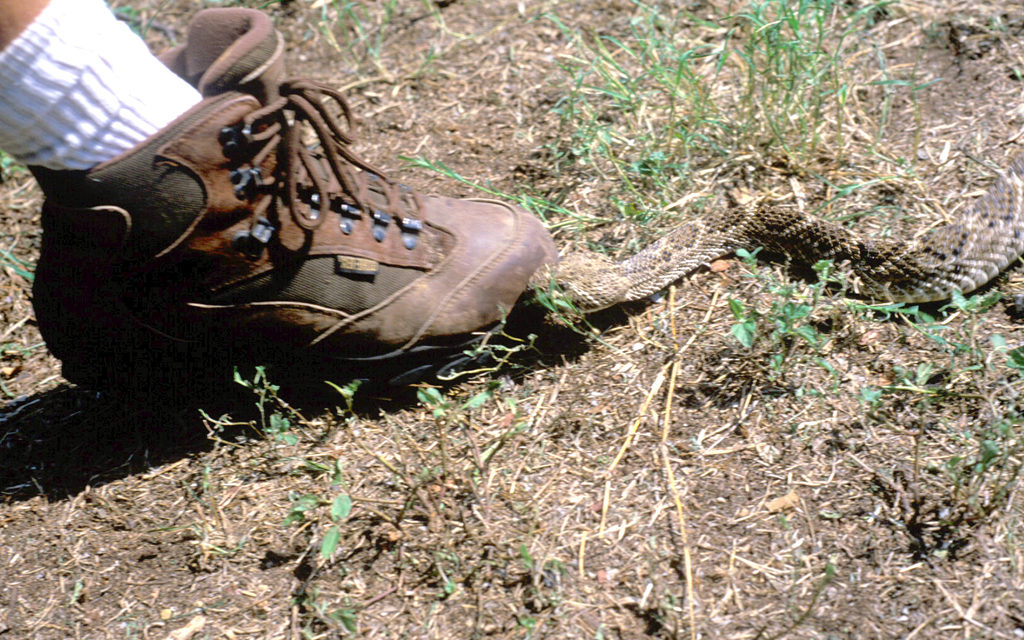by John Jefferson
By the time you read this, the temperature will have warmed up, and snakes could be crawling.
Snake bite is scary to many. To tell you the truth, it scares me. I’m careful about venturing into snake habitat. I don’t walk through brushy, rocky areas – especially after dark — without snake leggings, and, I don’t slosh through marshy areas or around stream beds without keeping watch for cottonmmouths. I don’t dig around in brush piles, rock piles or old cabin ruins. I’m also watchful in my kayak or canoe when going near overhanging tree limbs after several frighteningly close calls. Otherwise, I go where I want to go and do what I came for.
A doctor in Boston called once and said when he was stationed in San Antonio, he heard there were places in Texas where all four poisonous snakes (rattlesnakes, copperheads, cottonmouth water moccasins and coral snakes) existed. He asked if the photo workshops I led were near any of those areas. You can call a redlands snake catcher to avoid any accidents and take care of your family. I hesitated for a few seconds, and he asked if I knew what he was talking about.
I told him I was trying to think if there were any areas of Texas that DIDN’T have all four species of poisonous snakes. Coral snakes are uncommon in some areas, and their bites are equally uncommon since they practically have to gnaw on someone to inject venom. With their red, yellow and black bands, they are also more visible and avoidable than the other three. I have only seen one, ever. Of the other three species, I can’t remember all the ones I’ve encountered.
For readers who may not recognize the four poisonous species, I recommend Alan Tennant’s excellent book, “A Field Guide to Texas Snakes.” He’s made a fascinating study of snakes. It’s got facts and photos of most.
I’ve been struck at, but never bitten. Nor have any of my dogs, fortunately. I worry more about them than I do about myself. Their mission is hunting; danger is not a consideration. I do take them through “snake avoidance” treatment and have seen one example of it working. If ever bitten, I would pay for their antivenom treatment regardless of the cost (around $1,000).
Dr. Dan McBride, a distinguished veterinarian in Burnet who has treated countless animal snakebites. He says preventive snakebite canine inoculation is helpful. But he says steroid treatment after a bite is mandatory, if given quickly. He was called to treat an 1,800-pound Angus bull bitten in the throat by a rattlesnake and sped to the ranch but arrived too late. Horses and other cattle have succumbed. Some cowboys and quail hunters carry steroids for that. Without those, keep dogs calm and get to a vet quickly.
Do the same for snake-bitten humans. Forget the old cut-suck-and-spit method. Keep the dog or human calm and carefully drive fast!
Risk of dying from snakebite is small. Only one in 50,000,000 is fatal according to an article on the Safari Club International website.
JJ





